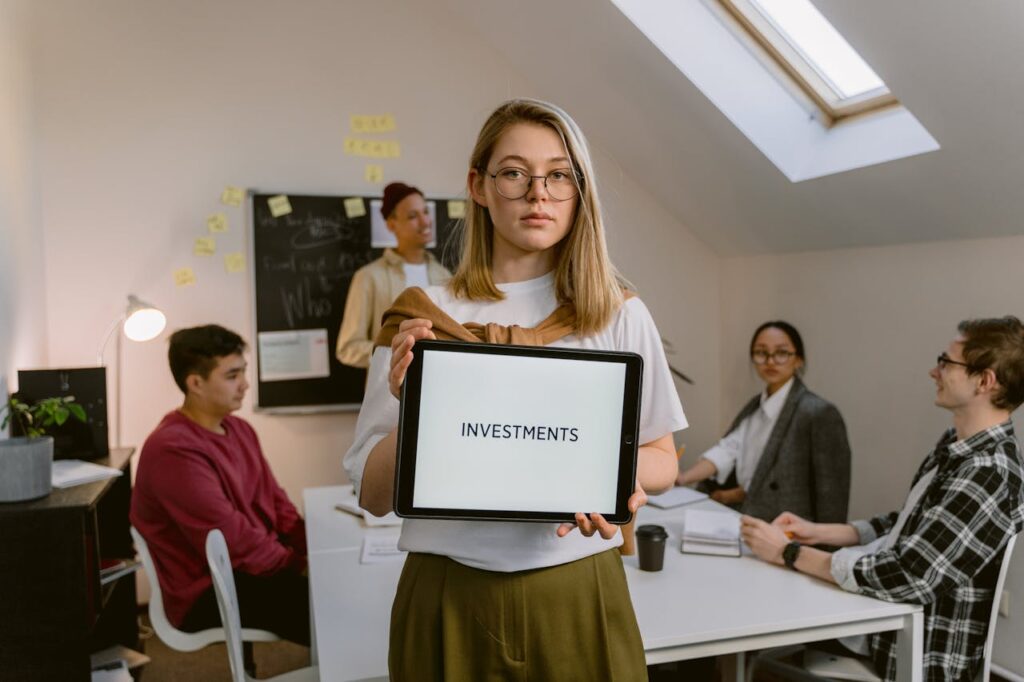Let’s be honest—MVP used to mean “just get something out there.” Something scrappy. Something raw. Just enough to test the idea.
But that’s changed.
Today, investors see a thousand MVPs. Most of them half-baked. Many of them forgettable. What they’re really looking for? A signal. Proof that you can build something real. Something that works. Something that can scale.
So no, your MVP doesn’t need to be perfect. But it does need to show you’re serious.
At Tran.vc, we work with early-stage founders building deep tech, robotics, and AI products. And we’ve seen what happens when founders treat the MVP as more than just a prototype. When they treat it as a foundation. A starting point not just for users—but for investors.
That’s what this article is about. Not making your MVP pretty. Not polishing the UI. But making it something an investor can respect.
Ready? Let’s get into it.
What Does “Investor-Ready” Actually Mean?
It’s Not About Polish—It’s About Purpose

When investors say they want to see an MVP, they’re not asking for something fancy.
They’re not expecting flawless design or a sleek front end. They’re not grading you on style.
What they’re really looking for is thought. Clarity. Intent.
Your MVP should tell a clear story: here’s the problem, here’s our approach, and here’s why it matters. It should show that you’ve done the hard thinking and made smart decisions. Not just about the product, but about the customer, the tech, and the future.
That’s what “investor-ready” means. It means your MVP earns a second look.
It Has to Prove There’s Something Worth Building
Deep tech, AI, and robotics are hard to fake. You can’t just spin up a landing page and call it innovation.
Your MVP should show that you’re not just trying things out. You’re solving a real problem, in a real way, with something only you can build.
If it’s AI, it should show actual outputs—not placeholder demos. If it’s hardware, it should run. Even if it’s slow or bulky or not fully optimized, it should prove that the hard part is possible.
Investors know early products are rough. But they want to see signal through the noise. Proof that what you’re building is technically possible—and commercially interesting.
It Should Look Like a Starting Point, Not a Side Project
Investors can spot the difference between a “weekend MVP” and a real attempt at building a company.
An MVP that’s investor-ready doesn’t have to be complete. But it should feel intentional. It should have structure. It should have focus. It should look like something that can grow.
You don’t need to boil the ocean. You need to show one real slice of value—something working end to end, even if it’s simple.
Because investors don’t back projects. They back potential. Your MVP is your first chance to show it.
Why Most Founders Get MVPs Wrong
They Build for Themselves, Not for the First Investor—or Customer
A lot of founders fall in love with their tech. That’s normal. But the MVP isn’t just for you. It’s for someone else.
It should speak to the person using it—and the person writing the check.
Too many MVPs are overbuilt in the wrong places. Extra features. Fancy logic. But no clear value. No focus.
Investors don’t care how many features you’ve added. They care whether a real person would pay—or even care—about what you’ve built.
If your MVP isn’t laser-focused on solving one urgent problem, it won’t click.
They Wait Too Long to Show Something Real
Some founders think they need six more months. A full product. Better infrastructure. More polish.
But in early-stage tech, waiting can be worse than showing something rough.
The sooner you put something in front of users and investors, the faster you learn. The more you refine. The more you prove.
An investor-ready MVP doesn’t have to be beautiful. But it has to be out there. Working. Showing signs of life.
Build enough to spark belief—not perfection.
They Skip the Foundation: IP, Data, and Defensibility
This is where technical founders often miss an edge.
Your MVP shouldn’t just show features. It should point to a moat.
If you’re building AI, what’s your data advantage? If it’s robotics, what’s unique about your hardware? What have you invented that someone else can’t just clone?
A strong MVP hints at the depth underneath. It doesn’t just show what you’ve built. It shows why it matters—and why it will last.
That’s what makes it more than a demo. It makes it a wedge into something fundable.
What Investors Really Want to See in Your MVP
Clear Use Case, Real Problem

The best MVPs don’t try to be everything at once. They solve one clear problem for one clear user.
If an investor can look at your MVP and immediately say, “I get who this is for, and I see why they’d care,” you’re on the right track.
Your MVP should not be vague or overly technical. It should be easy to explain, even to a non-expert. Because investors talk to other investors, and they’ll need to explain it too.
A clear problem. A working solution. That’s where respect starts.
Some Kind of Insight—Even If It’s Early
Founders sometimes forget that the MVP isn’t just a product—it’s a learning tool.
Even if you’ve only tested it with five users, what have you learned? What surprised you? What changed after you shipped it?
Good investors are curious. They want to see how you think. How you listen. How you improve.
If your MVP helped you discover something new—about your user, your tech, or the market—that’s gold.
Share that insight. That’s what makes you look like a founder who’s going somewhere.
Signals of Speed, Skill, and Focus
How fast did you get this built? How deep is the tech behind it? How did you decide what to leave out?
Every choice in your MVP tells a story. Did you spend months polishing something that users don’t even want? Or did you move fast, test fast, and iterate?
A scrappy MVP built in two weeks with real users says more than a polished one built in six months that nobody’s seen.
Investors notice speed. They notice trade-offs. They notice how sharp your focus is.
If your MVP shows that you can build well and think clearly, you’ve already won half the battle.
How to Build Investor-Ready Without Burning Out
Start With the End in Mind
Before you write a single line of code, ask yourself: What do I want an investor to understand from this?
Do I want them to see technical risk de-risked? Do I want to show a customer hooked? Do I want to prove that this model can scale?
Build to show that.
This doesn’t mean you need to be perfect. It means you need to be intentional. Everything in your MVP should serve a purpose—and that purpose should be clear when someone sees it.
Cut Everything That Doesn’t Move the Needle
Early MVPs should be tiny. Not because you’re lazy—but because you’re sharp.
Don’t add extra dashboards, or edge-case logic, or fancy features nobody asked for. Focus on what proves the core thing: that this idea deserves to live.
Strip it down to one user, one workflow, one outcome. If you can nail that, everything else can come later.
Remember, investors don’t need to see a finished product. They need to see that you know where you’re going—and why this is worth building.
Use What You’ve Got
You don’t need a team of five engineers to build something great. You just need clarity, tools, and a plan.
Use no-code tools if you have to. Hack it together. Use open-source models, frameworks, anything that helps you move faster.
What matters is that it runs, and that it makes your point.
At this stage, done is better than beautiful. Show that you can build—and investors will lean in.
How to Use Your MVP to Build Investor Trust
Show That You’ve Done More Than Just Code

When an investor sees your MVP, they’re not just evaluating the product. They’re looking at the thought behind it. They want to know you’ve done the homework—on the market, the customer, the edge case no one else is thinking about. Your MVP is a great moment to show that you’ve gone deeper than just code.
For example, if you’re building an AI workflow tool, your MVP should not only show a working feature but also include a glimpse of the real-world context it fits into. Even a simple dataset, a few live user interactions, or a small workflow with actual outputs can go a long way in proving that you’ve understood the problem and started solving it for real people.
If the MVP feels connected to the world outside your GitHub repo, that builds trust. It says you’re not just building what you can, but what someone needs.
Show That You Know What You’re Protecting
When you’re building something technical, especially in AI, robotics, or complex infrastructure, investors will inevitably ask: “What makes this defensible?” Your MVP doesn’t need to give away your secrets, but it should hint at the edge you’re building.
That edge might be a novel algorithm, a faster approach to a painful bottleneck, or even just better data—something your MVP can subtly expose. Even if the tech is early, showing that you’re already thinking about what needs to be protected signals that you’re building a business, not just a tool.
Investors love to see this level of care. It means you’re not just rushing for traction—you’re trying to build something that lasts. Something others can’t just copy or rebuild in a weekend.
Show That You Know Where This Is Going
Your MVP should have a clear “why now” and a clear “what’s next.” It should look like the first move in a much longer game. Too often, founders get stuck building a feature, not a foundation. That’s when MVPs fall flat.
The best MVPs show that the founder knows where the product needs to go next—and how each next step adds value or advantage. This is where having a simple roadmap in mind can make all the difference. Not a five-year plan. Just a confident sense of what’s next, and why.
When you can speak clearly about what this MVP unlocks—whether that’s access to a dataset, customer feedback, early revenue, or IP filings—you’re signaling to investors that this isn’t the end of the line. It’s the beginning of a strategy.
Show That You Know What to Ignore
The truth is, anyone can build more. But very few founders know what not to build. A great MVP reflects discipline. It shows that you’ve resisted the urge to say yes to everything. You’ve made choices. You’ve cut features. You’ve narrowed the focus.
When investors look at a tight, simple MVP that delivers one result well, they don’t see something small. They see someone who knows how to execute. They see someone who won’t get lost in the weeds when pressure hits.
Being selective with your MVP tells investors that you understand trade-offs. That you’re not trying to do it all—you’re trying to do it right.
What an Investor-Ready MVP Unlocks for You
You Get Taken Seriously—Faster
When your MVP is thoughtful, targeted, and working, investors can move faster. They don’t need to imagine what you might do someday. They can see what you’ve already done. It makes everything more concrete.
You’re no longer a pitch deck. You’re a founder with a product in motion. That’s a different conversation. Investors are quicker to schedule second meetings, loop in partners, and ask tougher—but more valuable—questions.
Instead of chasing meetings, you start controlling the room. That’s what happens when your MVP earns respect right out of the gate.
You Build Leverage Without Needing Hype
Fundraising can feel like a game of momentum. But real leverage doesn’t come from buzzwords or press hits—it comes from clarity. A sharp, working MVP gives you that.
You’re not just telling investors what’s possible—you’re showing them what’s real. That gives you more power in negotiations. It helps you raise on better terms. It allows you to say “no” to the wrong investors and wait for the right ones.
Founders who ship an investor-ready MVP early don’t just raise more. They raise with more control.
You Attract Better Talent, Partners, and Press
When your MVP works, people want to be part of it. Engineers see something serious. Early hires feel safer taking the risk. Partners and early customers feel like they’re joining something with momentum.
Even if the product is rough, the fact that it runs—that it exists and solves something real—says everything about your ability to move.
That kind of signal opens doors. Not just to capital, but to people who can make your startup stronger.
How Tran.vc Helps Founders Build MVPs That Matter
We Invest Before the Seed Round—When the Stakes Are Highest
Most investors wait until you have traction. We step in when you have an idea, a technical edge, and the courage to build.
Tran.vc invests up to $50,000 worth of in-kind services to help you turn that early insight into something fundable. We focus on IP strategy, patent filings, and helping technical founders protect the value they’re creating.
That means we don’t just help you build. We help you build the right thing—something defensible. Something with a moat.
We Help You Build With Intention, Not Just Speed
Speed matters. But speed without direction is just motion. We help early-stage founders zoom in on what matters most—IP, clarity, focus—and cut out the noise.
From the first line of code, we help you think like an investor. Not to impress them, but to build something they can believe in.
We’ve done this with AI teams, robotics engineers, solo founders, and researchers turning raw ideas into companies. And we’ve seen again and again: when your MVP is built with intention, everything else gets easier.
How to De-Risk Your MVP Before You Pitch
Investors Want Confidence in What Comes Next

At the earliest stages, investors aren’t betting on your product. They’re betting on your judgment.
They know your MVP will change. The UI will shift. The tech stack might evolve. But they’re looking for signals that you, as a founder, know how to reduce uncertainty.
That’s where de-risking comes in. It doesn’t mean removing every unknown. It means removing enough of the right ones so that an investor can say, “Yes, I believe this team can figure it out.”
A well-built MVP is a tool for that. But what makes it powerful is what surrounds it—the choices you make, the signals you send, the gaps you close before the questions even come up.
De-Risk the Tech: Show You’ve Tackled the Hardest Part First
If there’s one element of your product that makes it technically difficult—solve that first.
Don’t start with the interface. Don’t start with onboarding. Go straight at the hard problem. If your AI model depends on real-time inference under low latency, demo that. If your robotics platform depends on a precision-control algorithm, build that as your MVP core.
Investors don’t need to see the whole system. But if you can prove the riskiest piece works—even in a basic form—you’ve earned massive credibility.
This is especially true in deep tech, where most products look good on paper but fall apart in the real world. Show that you’ve crossed the first critical threshold.
De-Risk the Market: Show Real Signals, Even If They’re Small
You don’t need a thousand users to prove your point. Sometimes five thoughtful conversations are more powerful.
Use your MVP as a reason to talk to early adopters—technical users, industry insiders, or potential partners. Get feedback, document it, and distill the insights into a short summary.
Even if your product is clunky, showing that someone wants it, uses it, or is excited about what it could become makes a huge difference.
Founders who do this well don’t just say “we’re solving a problem.” They show that they’ve validated that problem, and are already learning how to sell into it.
That’s what de-risks the market for investors—not scale, but proof of learning and velocity.
De-Risk the Business: Show You Know Where the Value Is
Not every MVP has to generate revenue right away. But every MVP should hint at how value gets created—and captured.
Investors want to know you’ve thought about how this becomes a business. That could be a roadmap toward monetization, a unique data asset that grows over time, or a clear customer workflow that’s hard to replace.
When they look at your MVP, they should see more than a feature. They should see the seed of a system—one that can grow, evolve, and turn into something others will pay for.
If you can explain how your current product leads to future value, you’re not just building—you’re investing in your own leverage.
Build MVPs That Age Well
The best MVPs don’t get thrown out. They get expanded.
That means writing code you can keep. Collecting data you can use later. Filing IP based on early architecture. Thinking about modularity and reuse, even if you’re working fast.
At Tran.vc, we often work with founders whose MVP becomes the technical foundation for patents, investor diligence, or early enterprise pilots. That’s because it wasn’t built just to test an idea. It was built to last.
So yes, move fast. But don’t move sloppy. Build like it matters—because if it works, it will.
Conclusion: Don’t Just Build Something—Build Something That Matters
Your MVP is more than a demo. It’s your opening move. It’s your chance to show investors that you’re not just another founder testing an idea—you’re a builder with intention.
You don’t need a full product. You don’t need perfect code. But you do need focus. You need to prove that the hardest part is working. That someone cares. That there’s a path to value. And that what you’re building is defensible.
That’s what makes your MVP investor-ready. That’s what sets you apart.
At Tran.vc, we work with founders who are building at the edge of what’s possible—AI, robotics, hard tech. We don’t just write checks. We help you build the right foundation from day one. That means strong IP. Smart cap tables. And MVPs that lead to real traction, not just attention.
If you’re ready to build something investors can believe in—and competitors can’t clone—we want to hear from you.
Apply now at https://www.tran.vc/apply-now-form
Let’s build it right the first time.
